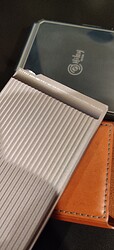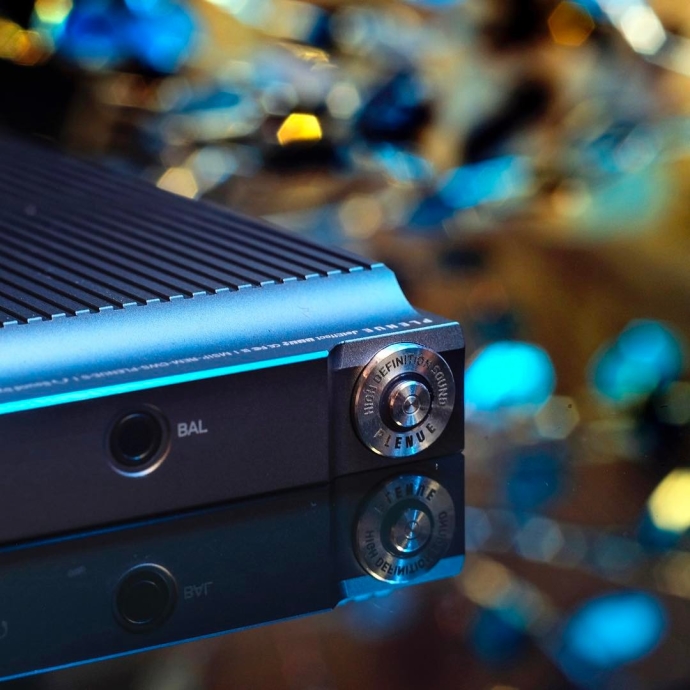To Start:
Both players are being used out of their single ended outputs. They both do have balanced but I do not have anything balanced at this time. The Hiby a 4.4mm and the Cowon an ancient weirdly poled 2.5 or 3.5mm. IEMs are nto used as the do punish my ears and cause me more discomfort than anything else. The highest gain settings were used on both DAPs (High on the Hiby, Headphone on the Cowon). The R6 used UAPP as the Hiby player was lacking, audio tweaks were mostly stock with tiny tweaks here and there.
Headphones:
Ultrasone HFI-780, very fun can that gives things a good “touch”. SLO Cable mod flattens out the V a little, though it is slight. I always likes these as they gave highs that realistic sizzle you get from hearing symbols rattle and the slide of fingers on guitar strings. Most other headphones smooth this out.
Focal Radiance impressions will be added once they arrive!
Personal Quirks:
I prefer a slight V or U shape in general with sparkly treble being what i seek first. I prefer tight well behaved bass over quantity or huge amounts of thump. Mids have grown on me and I am happy as long as theyre just not recessed. My big issue is with the 200-350hz range. Too much there puts pressure on my ears and it feels near instantly like I changed elevations or my sinuses just got sent into deep allergy season.
Below is a copy, paste, and tune up of my impressions of the Hiby R6 2020 from the official R6 thread…
Part 1:
Hiby R6 2020
Form Factor:
It’s nice! It fits well in my big palmed hands and I had no issues touching parts of the screen. Materials seem pretty good, buttons are sturdy, finish doesn’t have any issues and is a nice brushed metal. The rotary knob that has a good feel. It’s a bit more square than a cell phone and thicker. It is a few hairs light of hitting the hefty category. Issues here is the preinstalled screen protectors don’t go to the corners, with a case on the volume rotary is a PIA to turn, and every here and there the touch screen seems to not register.
UI:
If you know how to use a cell phone you can use this without any issue. It’s quick and responsive. It boots up quick, responds quick, and it doesn’t get in the way of itself or frustrate me. It’s a 1080p screen so at times text can be smaller than you expect but android can scale it up and its never too tiny to click or read. One thing I do not like is the physical buttons are not labeled so its been a guessing game and the rotary seems backward for volume up and down. Speaking about volume you can turn the rotary to change the volume, which is a little slow compared to the room you have per turn, but it would also pop up the on screen volume too. The on screen volume is way too sensitive. It always seems to be touched to increase volume and it WILL blast you out without any questions. I tried this lower volume and it somehow still turned it up and blasted my ears. I made it a point to take it out of my pocket for amd adjustment as I legit feared a hearing loss incident.
Sound:
So Sound… This is the most important part of a DAP for me. I don’t use the device much outside of travel, commute, and daily walks so this is where it’s at.
Overall Signature — Things here are neutralish but with a dose of thickness. Bass adds thickness and treble is present yet not piercing or not overly smoothed, while the mids dont give way. You get a “wall of sound” type of feel with this player.
Bass — Thick and round. A good quantity of bass from sub to mids, but more towards the mids to my ear. It’s not the hardest hitting or fastest and goes for a more big and thick feel. Unless a recording is more mild and well behaved I do feel the bass started to over step its bounds and the transition between bass and mids was not seamless. This is one thing that got me, this added to that 200-350hz range that I just dont like. YMMV.
Mids — Much better than the M11, there is space here and vocals are nice and easy to hear. There is some layering though not insanely deep. Voices sound like they should and instruments are engaging. Once again, thick. Good texture, good detail. Better than adequate, but I wouldnt say it’s the main reason you pursue this player. I also dont know who this would dissapoint outside the most fickle of mid frequency connoisseurs.
Treble — Finally a player I don’t need to turn the treble up on. Smooth and present and it has a little bit of touch. With the help of the MSEB it gets in the realm of the sparkly and crispy that I prefer. I can not get it all the way there without other adverse effects, but I dont see it ever being in a spot it will hurt… unless youre really cranking it and threw out SQ way far back.
Soundstage and Placement — The stage here has a decent size. Bigger than the NYC basement jazz club of the Cowon J3, and waaaaay bigger than the small ball the m11 offered. Placement didnt seem over exaggerated and was leaning more towards realistic than holographic. Large live recordings felt smaller than the actual stage but not enough to where I think it is sabotaging or taking away from the experience.
Dynamics — Macro dynamics were very good. Chorus sections really exploded so so nicely. Micro dynamics too seemed to provide more to each piece. This really gave everything a good musicality and made you want to move while adding to the feeling of depth. It did this by really having things explode. The player has a mostly quiet background but the play here wasnt because it was inky black into music, it was from how big it made the big parts. I may say this is the R6 2020s strong point and it was a blast.
Timbre and Texture — Adequate. Texture was decent especially in the bass. Timber could be better. The sound of the crowds moving and clapping sounded like they recorded a light rain fall and put it in. It could be worse but wasnt a standout for me
Detail — Good. Details are good. The extended bass overshadowed some things and some small bits needed an attentive ear to really grab. But a bit can be uncovered with the DSP/EQ. I think it is fitting of it’s price range. Some have said it can be analytical but I disagree. I think it may have some good detail retrieval but it smooths over and gels things together that it isnt begging you to listen to every little scratch.
EQ & DSP:
EQ — So I actually didnt touch this or really test it, especially as it’s not a full or semi PEQ. It did pass the first test, when you put it on it didn’t alter the sound or volume! WHY DO SOME PLAYERS DO THAT! Also the EQ only works in the hiby player and for some reason is not system wide like the MSEB. Since it is for the Hiby Player only, for me it is kind of useless as UAPP > Hiby Player
DSP — Hiby calls this MSEB, It lets you tweak things by “explaining” rather than giving you a frequency that you - or +. (ie: Female vocals is one option to change and it can be “intoxicated” or “detoxed”.) You can adjust it between -100 and 100 with 0 being default. I used this to add a little bit more sparkle and crispness to the highs which brought out a lot of detail in that area. That same water drop crowd from before took more shape and I swear I heard someone open a candy wrapper, and now sliding fingers on guitar strings had some sizzle to it. This all needs to be used extremely conservatively. Going more than say 25 points in each way starts to mush the sound and blurs things. The other thing is unlike an EQ that will just cut or boost one thing, I think each option here changes multiple values. When I add to the highs i have to evaluate if its worth the change to the mids and the bass.
Extras:
I havent tried streaming or the hiby link or anything like that. I also think much of this is subjective to each person and use case but I cannot deny the device is jam packed. It was nice knowing I had the option to go to youtube or a streaming service to grab a song buzzing around in my head but is lacking in my library. Less useful on the go, but still nice while in wifi coverage.
Overall and Notes:
I like the player and its finally an upgrade to my Cowon J3. It had my foot tapping and I only stopped listening to it today as I needed to eat dinner. Musical, engaging, whatever else you want to call it, it has it. It is not a be all end all but it is not severely lacking in anything for me. I will also note some said the sound quality of the default hiby player was lacking. I agree here and prefer UAPP. This does cost me the hiby connect functionality, which I was looking forward to using. UAPP also needs to connect to wifi to check its license before playing? Learned this the hardway on my daily walk and I started the player outside wifi range. A bit troublesome if this will be a travel dap where I will not always be near a connection. There is a lot of mid bass in that 200-350hz range. This is my trouble range and it feels like I hit high altitude and my ears need to pop. MSEB can help this but a system wide eq really is needed.
The unit is very particular with how it charges. My first one was sent back via warranty as it would not charge via my pc and only select cables and wall warts would do. The new device will charge on anything except it will lose power when connected to my PC usb while my pc is off. The mobo has a usb charge feature but i guess its not enough power for the dap even though phones are fine.


